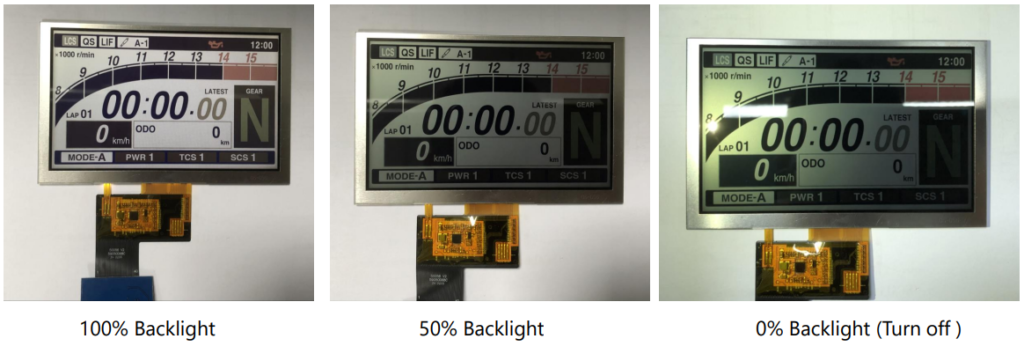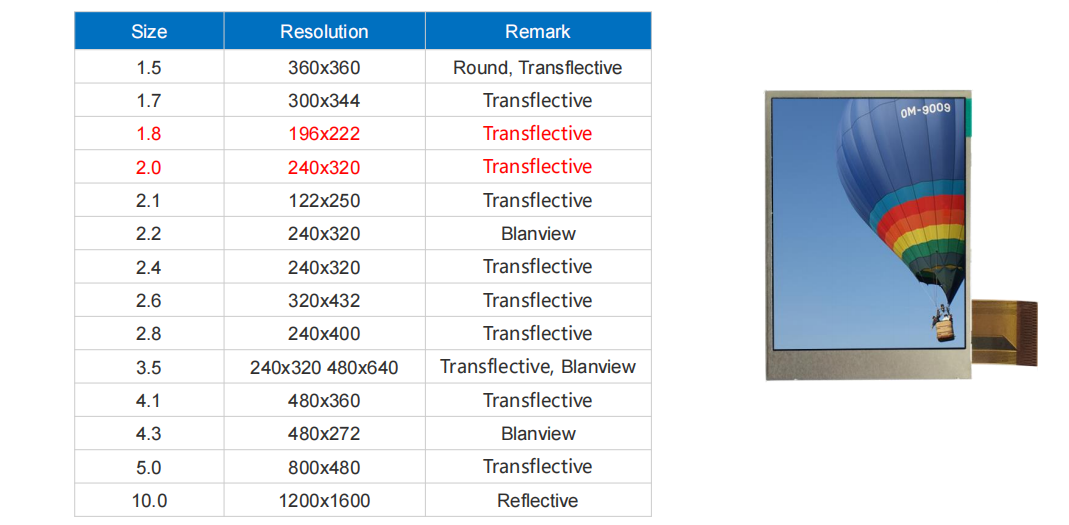+44 (0)1634 791600
info@crystal-display.com
Newsletter Sign Up!
+44 (0)1634 791600
info@crystal-display.com
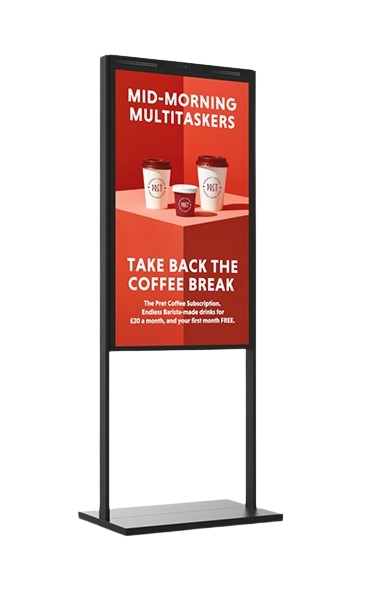



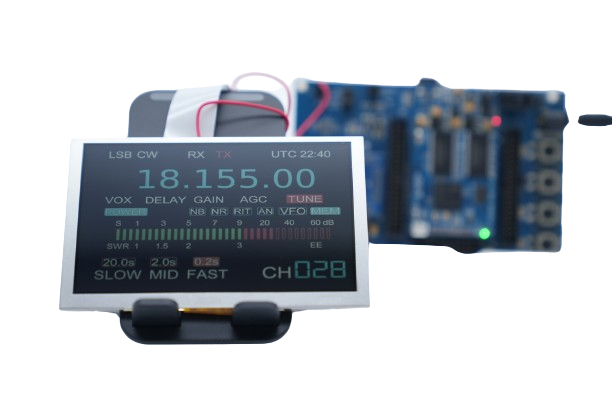
When employing a conventional transmissive TFT display in outdoor settings, the necessity for a very high brightness LED backlight, typically ranging from 800 to 2000 nits, arises to prevent washout under direct sunlight. However, this solution introduces notable drawbacks, particularly in terms of bulkiness and power consumption. Firstly, the high brightness LED backlights contribute to the increased bulkiness of the display unit. In scenarios where sleek and compact designs are paramount, such as handheld devices, this can be a limiting factor.
Secondly, the elevated power consumption associated with these high brightness backlights poses a significant challenge, particularly in battery-powered applications. This heightened power demand has the potential to substantially reduce the battery life of the device, making it less viable for power-conscious applications like handheld instrumentation. Additionally, the intense LED backlights generate heat, necessitating efficient heat dissipation mechanisms to maintain overall performance and longevity. This introduces an added layer of complexity to the design process.
A transflective TFT (Thin Film Transistor) display is a type of display technology that combines features of both transmissive and reflective displays. This hybrid technology is designed to enhance visibility in various lighting conditions, making it particularly suitable for outdoor or high-ambient-light environments.
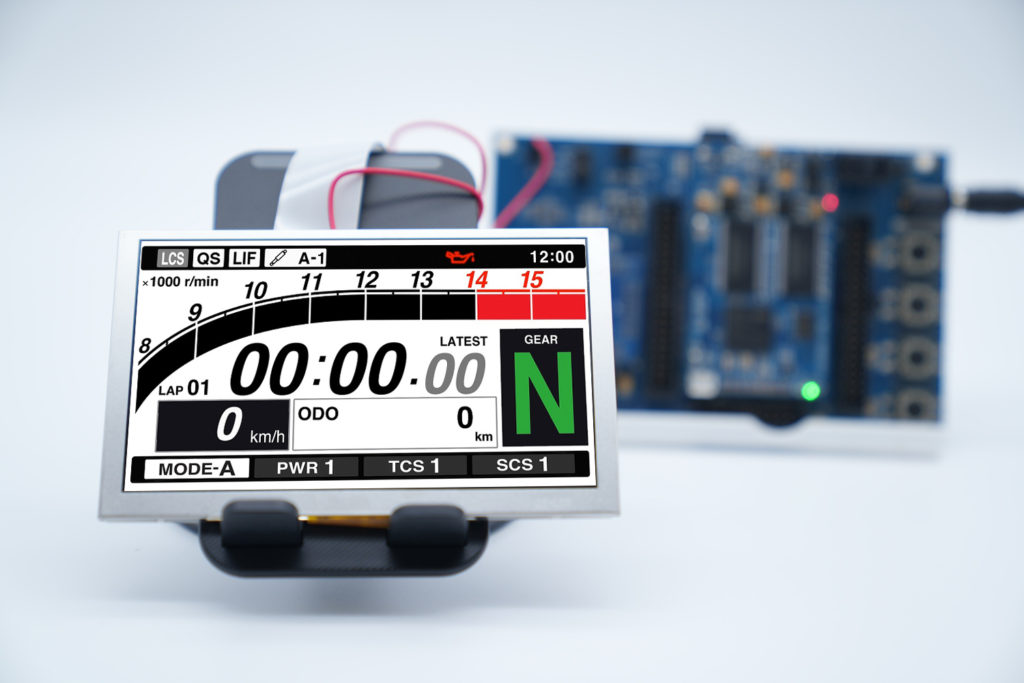
Adaptive Visibility: Transflective TFT displays dynamically adjust to ambient lighting conditions, utilizing ambient light for visibility in bright environments and a backlight for low-light conditions. This adaptive feature ensures optimal visibility in various lighting scenarios.
Outdoor Readability: The displays excel in outdoor settings, offering enhanced readability in direct sunlight. By leveraging ambient light, transflective displays mitigate glare and reflections, providing a clear and legible screen even in challenging outdoor conditions.
Reduced Power Consumption: The ability to switch between reflective and transmissive modes based on ambient light contributes to lower power consumption. This is particularly advantageous in battery-powered devices, extending the device’s operational life.
Versatility Across Environments: Transflective displays are versatile and well-suited for a variety of environments, from outdoor signage and automotive displays to handheld devices. Their adaptability makes them suitable for applications with varying lighting conditions.
Balanced Contrast and Color: These displays maintain a balance between contrast and color reproduction in both reflective and transmissive modes. This ensures a consistent and satisfactory viewing experience across different environments, without compromising visual quality.
Dual-Mode Operation: Transflective TFT displays operate in both reflective and transmissive modes, seamlessly transitioning between the two as lighting conditions change. This dual-mode operation enhances the overall flexibility of the display.
Sunlight Readable Backlight: In low-light or dark conditions, transflective displays incorporate a backlight for visibility. This feature ensures that the display remains readable even when there is insufficient ambient light, providing a consistent user experience.
Optimized for Battery-Powered Devices: The reduced power consumption and adaptive nature of transflective displays make them well-suited for battery-powered devices, such as handheld instruments or portable electronics.
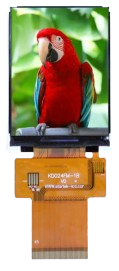
We can offer transflective TFT solutions that offer users readability in all light conditions without increasing the power consumption or bulkiness. Transflective displays differ in their construction from their transmissive counterparts in that they have a “Transflector” lens which sits behind the rear polariser, ambient light travels through the front of the TFT glass cell and is then reflected by the transflector back through the TFT glass cell, within this configuration the ambient light is used in the same way as an LED backlight.
In scenarios where the ambient light levels are low, or during nighttime usage, a crucial feature of transflective TFT displays is the incorporation of an LED backlight. This LED backlight serves to illuminate the display, ensuring visibility and usability even in conditions where ambient light is insufficient. The transflector lens and TFT glass cell work in tandem, allowing the LED backlight output to pass through. This operation is akin to the functionality of a transmissive TFT display, providing clear and well-lit visuals when external lighting is inadequate.
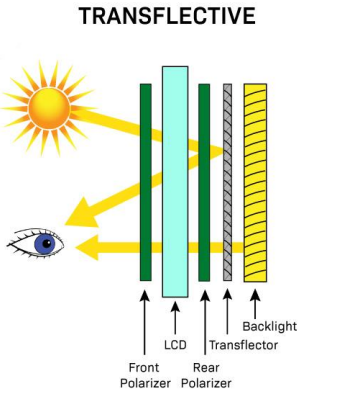
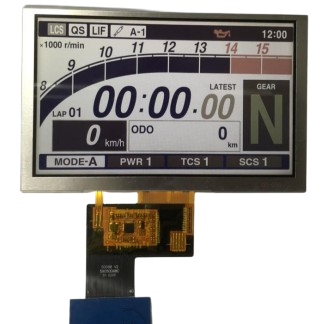
Transflective displays are particularly well-suited for a diverse range of applications, excelling in scenarios where battery-powered handheld devices or direct sunlight visibility are paramount. Their versatility makes them an ideal choice for various industrial, marine, automotive, and aerospace applications
